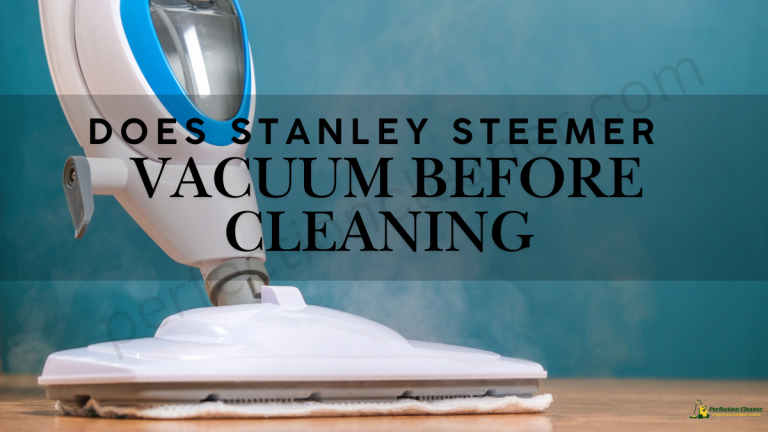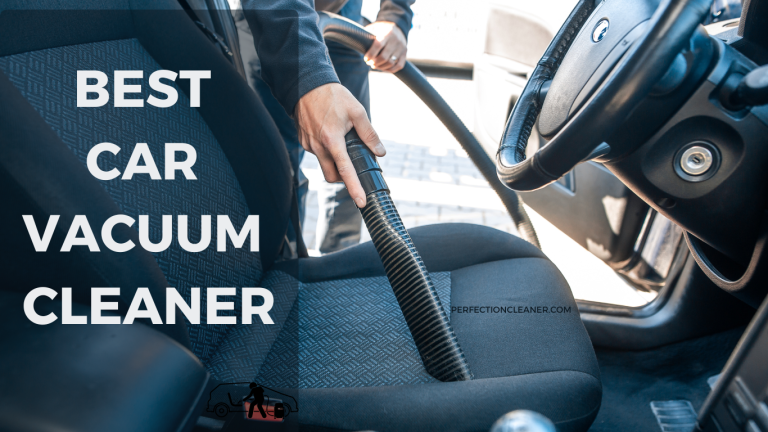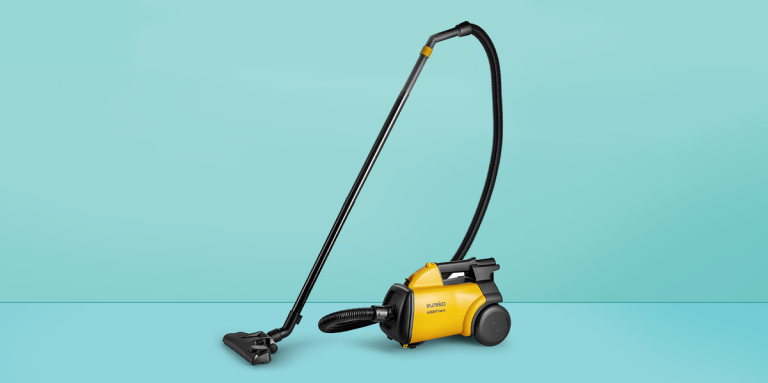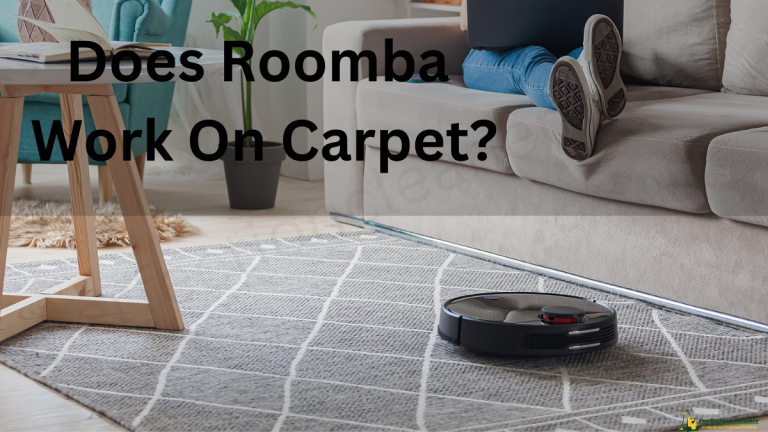How Often Should You Replace the HEPA Filter on Your Vacuum Cleaner
Importance of a HEPA Filter in a Vacuum Cleaner
In the symphony of household cleaning, the HEPA filter plays a leading role, and its significance cannot be overstated. Let’s take a closer look at why this unassuming component in your vacuum cleaner is a powerhouse in maintaining a clean and healthy living space.
1. Microscopic Menace Control:
At the heart of the HEPA filter’s importance lies its remarkable ability to trap tiny particles that escape the notice of the human eye. While standard filters may capture larger debris, HEPA filters go the extra mile, snaring particles as small as 0.3 microns. This includes common allergens like pollen, pet dander, and even some bacteria, making them an invaluable asset for individuals with respiratory sensitivities.
2. Air Quality Enhancement:
Beyond the visible dirt and dust, it’s the unseen pollutants that often pose a more significant threat to indoor air quality. The HEPA filter acts as a guardian, preventing these microscopic intruders from recirculating into the air during vacuuming. This not only ensures a visibly cleaner home but also contributes to a fresher and healthier environment.
3. Allergen Armament:
For allergy sufferers, the HEPA filter is akin to a superhero cape. By efficiently capturing allergens, it reduces the presence of triggers that can lead to sneezing, watery eyes, and respiratory discomfort. This is particularly crucial in homes with pets, where pet hair and dander can become airborne during cleaning, posing a challenge for those prone to allergies.
4. Extended Appliance Longevity:
While the primary role of a HEPA filter is to improve indoor air quality, it also indirectly contributes to the overall longevity of your vacuum cleaner. By preventing fine particles from infiltrating the inner workings of the machine, the filter helps maintain optimal performance and reduces wear and tear on essential components.
the HEPA filter in your vacuum cleaner is a silent defender, working diligently to combat the invisible foes that can compromise the cleanliness and health of your home. As we explore the importance of regular filter replacement in subsequent sections, remember that a well-maintained HEPA filter not only keeps your living space pristine but also contributes to a healthier and more comfortable lifestyle. So, let’s continue our journey into the realm of vacuum cleaner care, ensuring that the air we breathe at home is as clean as it can be.
How Does a HEPA Filter Work?
Understanding the inner workings of a HEPA filter is like peeling back the layers of a cleaning superhero’s suit. Let’s delve into the fascinating mechanism that makes these filters stand out in the world of vacuum cleaner technology.
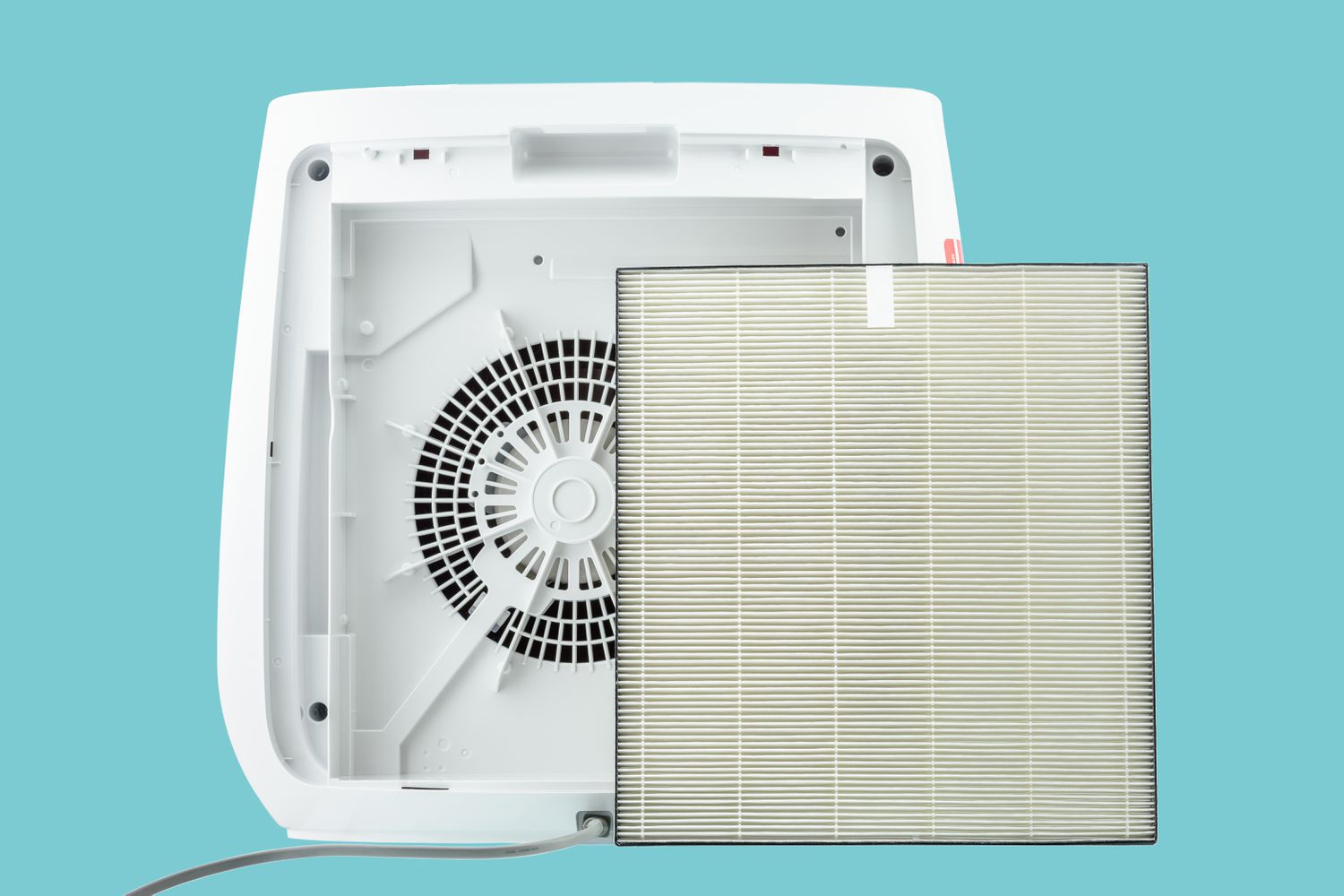
1. Microscopic Entrapment:
HEPA filters owe their effectiveness to a dense arrangement of fibers, usually made of fiberglass. These fibers create a maze-like structure with microscopic openings that allow air to pass through while trapping particles. The key here is the size of these openings, which are strategically designed to capture particles as small as 0.3 microns—a feat that standard filters struggle to achieve.
2. The Power of Pleating:
One notable feature of HEPA filters is their pleated design. The accordion-like folds significantly increase the surface area of the filter, providing more opportunities for particles to be captured. This design not only enhances efficiency but also extends the lifespan of the filter by distributing the workload across a larger area.
3. Multi-Layered Defense:
Think of a HEPA filter as a multi-layered defense system. Larger particles are captured on the outer layers, while smaller particles penetrate deeper into the filter. The combined efforts of these layers ensure a thorough filtration process, leaving the air that passes through the filter significantly cleaner.
4. Part of a Filtration Ensemble:
HEPA filters often work in tandem with pre-filters and post-filters in vacuum cleaners. Pre-filters catch larger debris, preventing them from reaching the HEPA filter and clogging it prematurely. Post-filters, on the other hand, provide an additional layer of filtration, ensuring that the air leaving the vacuum is as clean as possible.
5. Regular Maintenance Matters:
While HEPA filters are robust, they are not invincible. Over time, the accumulation of captured particles can saturate the filter, diminishing its effectiveness. Regular maintenance, including timely replacements, is crucial to ensure that the HEPA filter continues to perform at its best.
In essence, the magic of a HEPA filter lies in its ability to transform a humble vacuum cleaner into a high-performance air purifier. By harnessing the principles of fine filtration, these filters contribute not only to cleaner floors but also to a healthier indoor environment. As we continue our exploration of vacuum cleaner care, remember that understanding how your HEPA filter works is the first step towards unleashing its full potential in your quest for a cleaner, healthier home.
Related: How to Clean an Air Purifier HEPA Filters and Are HEPA Filters Washable?
Factors that Affect the Lifespan of a HEPA Filter
The lifespan of a HEPA filter is influenced by a myriad of factors, each playing a role in determining how long this vital component of your vacuum cleaner will maintain its efficiency. Let’s explore the key factors that can either extend or shorten the life expectancy of your HEPA filter.
1. Usage Frequency:
How often you use your vacuum cleaner directly impacts the lifespan of the HEPA filter. High-frequency usage, especially in homes with pets or heavy foot traffic, may necessitate more frequent filter replacements. Conversely, a vacuum used sporadically in a less active household may enjoy a longer filter lifespan.
2. Environmental Conditions:
The environment in which your vacuum operates significantly influences the workload on the HEPA filter. Homes situated in dusty areas or those with high pollen counts challenge the filter more than residences in cleaner environments. Adjust your filter replacement schedule accordingly based on the environmental conditions in your living space.
3. Pre-filter Maintenance:
Many vacuum cleaners come equipped with pre-filters designed to capture larger particles before they reach the HEPA filter. Regularly cleaning or replacing these pre-filters can extend the lifespan of the HEPA filter by preventing larger debris from clogging its delicate fibers prematurely.
4. Vacuum Cleaner Type:
The type and quality of your vacuum cleaner play a crucial role in determining HEPA filter longevity. Higher-end models often feature better sealing mechanisms, ensuring that particles are efficiently directed through the filtration system. Investing in a quality vacuum cleaner can pay dividends in terms of a longer-lasting HEPA filter.
5. Proper Vacuum Cleaner Maintenance:
Routine maintenance of your entire vacuum cleaner, not just the HEPA filter, contributes to the overall health of the appliance. Regularly emptying the dustbin or replacing vacuum bags, cleaning brushes and belts, and keeping the entire system well-maintained can reduce the strain on the HEPA filter, prolonging its effectiveness.
6. Particle Size and Composition:
The composition and size of particles in your living space also impact the filter’s lifespan. Fine particles like pet dander or certain types of dust can clog the filter more quickly than larger, coarser debris. Understanding the particle composition in your home allows for a more tailored approach to filter maintenance.
Understanding these factors empowers you to proactively manage the lifespan of your HEPA filter. By adapting your maintenance routine to the unique conditions of your home, you ensure that your vacuum cleaner continues to operate at peak efficiency, contributing to a cleaner and healthier living environment.
How Often Should You Replace a HEPA Filter?
Maintaining the efficiency of your vacuum cleaner’s HEPA filter involves a delicate dance between usage patterns, environmental conditions, and proactive care. While there’s no one-size-fits-all answer, here’s a comprehensive guide to help you determine how often you should replace your HEPA filter for optimal performance.
1. Manufacturer Recommendations:
Start by consulting the manufacturer’s guidelines for your specific vacuum cleaner model. Manufacturers often provide recommendations on when to replace the HEPA filter based on factors like usage frequency, filter type, and the specific design of the appliance. Adhering to these recommendations can ensure that you stay within the parameters set by the experts who crafted your vacuum.
2. Frequency of Use:
A general rule of thumb is to replace the HEPA filter every 6 to 12 months, but this can vary based on how frequently you use your vacuum. Homes with daily vacuuming routines, especially those with pets, may benefit from more frequent replacements. On the other hand, for occasional users, an annual replacement might suffice.
3. Environmental Considerations:
The environment in which you use your vacuum is a key determinant. If you live in an area with high levels of dust, pollen, or other airborne particles, you may need to replace the HEPA filter more often. Pay attention to changes in air quality and adjust your replacement schedule accordingly.
4. Allergies and Respiratory Sensitivities:
For households with allergy sufferers or individuals with respiratory sensitivities, a more proactive approach to filter replacement is advisable. Consider replacing the HEPA filter every 3 to 6 months to ensure optimal allergen capture and maintain a clean indoor environment.
5. Visual Inspection:
Sometimes, the best indicator is a visual one. Regularly inspect the condition of your HEPA filter. If it appears visibly dirty, discolored, or damaged, it’s a strong signal that replacement is imminent. Trust your eyes to guide you in maintaining a filter that is up to the task.
6. Performance Monitoring:
Pay attention to changes in your vacuum cleaner’s performance. If you notice a decline in suction power, an increase in airborne particles during vacuuming, or unpleasant odors, it may be time to replace the HEPA filter. Regularly monitor your vacuum’s performance as a proactive measure.
the frequency of HEPA filter replacement is a dynamic aspect of vacuum cleaner maintenance. Tailoring your approach to factors like usage, environment, and specific needs ensures that your vacuum continues to deliver the cleanest results. By staying attuned to both manufacturer recommendations and the unique conditions of your home, you can strike the right balance in renewing your HEPA filter for a consistently efficient and healthy cleaning experience.
Related: How to Clean a Vacuum Cleaner Filter
Steps to Replace a HEPA Filter in Your Vacuum Cleaner
Ensuring your vacuum cleaner operates at peak performance involves regular maintenance, including the timely replacement of the HEPA filter. Here’s a step-by-step guide to help you effortlessly refresh this crucial component and keep your cleaning routine in top form.
1. Refer to the Manufacturer’s Instructions:
Begin by consulting your vacuum cleaner’s user manual for specific instructions on replacing the HEPA filter. Manufacturers often provide detailed guidance tailored to their models, ensuring you follow the correct procedure for your appliance.
2. Gather Necessary Supplies:
Before you start, gather the supplies you’ll need for the replacement, which typically includes a replacement HEPA filter compatible with your vacuum cleaner model. Ensure you’re working in a well-lit area with enough space to maneuver.
3. Power Off and Unplug:
For safety, turn off your vacuum cleaner and unplug it from the power source. This precautionary step ensures that there’s no risk of injury or damage during the replacement process.
4. Locate the HEPA Filter Compartment:
Identify the location of the HEPA filter compartment on your vacuum cleaner. This is usually indicated in the user manual and may involve removing a cover or accessing a designated area. Follow the manufacturer’s instructions to open the compartment.
5. Remove the Old HEPA Filter:
Carefully take out the existing HEPA filter from its housing. Depending on the design, you might need to unlock a latch, unscrew a cover, or simply pull the filter out. Dispose of the old filter according to local regulations, considering recycling options if available.
6. Clean the Filter Housing (If Necessary):
Take a moment to inspect and, if needed, clean the filter housing. Use a soft brush or cloth to remove any dust or debris that may have accumulated. A clean housing ensures optimal performance for the new filter.
7. Install the New HEPA Filter:
Unbox the new HEPA filter and position it correctly in the housing, following any directional arrows or markings. Ensure the filter is securely in place and properly aligned with the designated slots or guides.
8. Close the Compartment:
Once the new HEPA filter is in position, close the compartment securely. Follow the manufacturer’s instructions to lock or secure the cover, ensuring a snug fit to prevent any air leakage during operation.
9. Power On and Test:
Plug in your vacuum cleaner, turn it on, and test the suction power to confirm that the new HEPA filter is installed correctly. This quick test ensures that the filter is not causing any airflow issues.
By following these straightforward steps, you can easily replace the HEPA filter in your vacuum cleaner, contributing to a healthier home environment and maintaining the efficiency of your cleaning appliance. Regularly incorporating this maintenance task into your cleaning routine ensures that your vacuum continues to deliver optimal performance in capturing allergens and keeping your living space clean and fresh.
Benefits of Regular HEPA Filter Replacement
Committing to a routine of regular HEPA filter replacement goes beyond simple maintenance—it’s a key investment in the overall effectiveness of your vacuum cleaner and the quality of your indoor air. Let’s explore the numerous benefits that come with timely and consistent filter renewal.
1. Optimal Filtration Efficiency:
The primary function of a HEPA filter is to trap microscopic particles and allergens. Regular replacement ensures that the filter maintains its efficiency, capturing airborne contaminants and preventing them from circulating back into your home during vacuuming. This, in turn, contributes to a cleaner and healthier living environment.
2. Sustained Suction Power:
A clogged or worn-out HEPA filter can significantly hinder the suction power of your vacuum cleaner. By replacing the filter as recommended, you ensure that your vacuum operates at its full potential, making each cleaning session more effective in picking up dirt and debris.
3. Extended Appliance Longevity:
A well-maintained HEPA filter indirectly contributes to the overall lifespan of your vacuum cleaner. By preventing particles from infiltrating the inner workings of the machine, you reduce the wear and tear on essential components. This, in turn, translates to a more durable and long-lasting appliance.
4. Reduced Allergen Exposure:
For households with allergy sufferers, regular HEPA filter replacement is a proactive measure in minimizing allergen exposure. By consistently capturing and containing particles like pollen, pet dander, and dust mites, the filter helps create an environment that is more conducive to respiratory health.
5. Maintained Indoor Air Quality:
A clean HEPA filter means cleaner air in your home. As the filter efficiently captures and retains particles, it prevents them from becoming airborne during vacuuming. This translates to improved indoor air quality, benefiting the health and well-being of everyone in your household.
6. Enhanced Cleaning Performance:
When your vacuum cleaner is equipped with a fresh HEPA filter, it operates with peak efficiency. This not only leads to better suction power but also results in a more thorough cleaning performance. Regular filter replacement ensures that your vacuum continues to deliver the cleanliness you expect.
7. Cost-Efficient Maintenance:
While the upfront cost of replacement filters may seem like an additional expense, it’s a cost-effective investment in the long run. Regular replacements prevent the need for more extensive repairs or premature replacement of the entire vacuum cleaner, saving you money in the maintenance and replacement cycle.
the benefits of regular HEPA filter replacement extend far beyond the immediate improvement in vacuum performance. It’s a holistic approach to maintaining a clean and healthy home environment, safeguarding your appliances, and promoting the well-being of your household. Embrace the routine of filter renewal, and you’ll reap the rewards of a consistently efficient and reliable vacuum cleaner.
Common Mistakes to Avoid When Replacing a HEPA Filter
Replacing a HEPA filter may seem like a straightforward task, but certain common mistakes can compromise the effectiveness of your vacuum cleaner and the longevity of the new filter. Here’s a guide to help you sidestep these pitfalls and ensure a smooth and error-free filter replacement process.
1. Ignoring Manufacturer Guidelines:
One of the primary mistakes is disregarding the manufacturer’s recommendations. Each vacuum cleaner model may have unique instructions regarding the type of HEPA filter it requires and the frequency of replacement. Failing to adhere to these guidelines can result in suboptimal performance and potential damage to the appliance.
2. Skipping the Pre-filter Check:
Many vacuum cleaners feature pre-filters that capture larger debris before they reach the HEPA filter. Neglecting to check and, if necessary, clean or replace the pre-filter before installing a new HEPA filter can lead to quicker clogging and reduce the overall efficiency of the filtration system.
3. Incorrect Installation Orientation:
HEPA filters are designed to fit in a specific orientation within the filter compartment. Installing the filter upside down or in the wrong direction can compromise its effectiveness and result in inadequate filtration. Always follow the directional arrows or markings indicated on the filter and in the vacuum cleaner manual.
4. Delaying Replacement Despite Signs:
One of the most common mistakes is procrastinating on HEPA filter replacement even when clear signs indicate it’s necessary. Reduced suction power, increased dust during vacuuming, or unpleasant odors are signals that should prompt immediate attention to ensure optimal performance and indoor air quality.
5. Using Non-Compatible Filters:
Selecting a HEPA filter that is not compatible with your vacuum cleaner model can lead to a range of issues, from poor fit to compromised filtration. Always check the compatibility of the replacement filter with your specific vacuum model to avoid unintended consequences.
6. Neglecting Housing Cleaning:
When replacing the HEPA filter, take the time to inspect and, if needed, clean the filter housing. Accumulated dust or debris in the housing can affect the new filter’s performance. A clean housing ensures that the filter can operate at its full potential.
7. Overlooking Regular Maintenance:
Replacing the HEPA filter is just one aspect of overall vacuum cleaner maintenance. Neglecting other routine tasks, such as emptying the dustbin or replacing vacuum bags, can contribute to a quicker saturation of the filter and hinder overall cleaning performance.
8. Not Powering Off and Unplugging:
Safety is paramount during any maintenance task. Failing to power off your vacuum cleaner and unplug it before attempting to replace the HEPA filter poses a risk of injury and potential damage to the appliance.
By steering clear of these common mistakes, you’ll ensure that the replacement process is seamless and that your vacuum cleaner continues to operate at its best. Regular, attentive maintenance not only enhances the lifespan of your HEPA filter but also contributes to a cleaner and healthier home environment.
Tips for Extending the Lifespan of a HEPA Filter
A well-maintained HEPA filter is the key to ensuring your vacuum cleaner operates at peak efficiency. Here are some practical tips to help you extend the lifespan of your HEPA filter, maximizing its performance and keeping your home cleaner and healthier.
1. Regular Pre-filter Maintenance:
If your vacuum cleaner is equipped with a pre-filter, make it a habit to regularly clean or replace it. The pre-filter acts as the first line of defense, capturing larger particles and preventing them from reaching the HEPA filter. Keeping it clean reduces the workload on the HEPA filter, extending its lifespan.
2. Monitor Vacuum Cleaner Bag or Dustbin:
Emptying the vacuum cleaner bag or dustbin regularly is crucial for the overall health of your vacuum system. A full bag or bin can lead to increased stress on the HEPA filter, causing it to clog more quickly. Check and empty the bag or bin whenever it reaches its recommended capacity to maintain optimal filtration.
3. Vacuum High-Traffic Areas First:
Start your cleaning routine by vacuuming high-traffic areas where dirt and debris accumulate the most. This way, the HEPA filter encounters fewer particles during the initial cleaning stages, reducing the strain on the filter.
4. Use the Right Vacuum Cleaner Attachments:
Utilize the appropriate attachments for different surfaces. Using the right attachments ensures efficient cleaning without overtaxing the HEPA filter. Adjust attachments based on the flooring type and the specific cleaning requirements to minimize wear on the filter.
5. Regular Filter Inspection:
Periodically inspect the condition of the HEPA filter. If you notice visible dirt, discoloration, or signs of damage, it’s time to consider replacement. Regular inspections allow you to address potential issues before they compromise the filter’s effectiveness.
6. Follow the Manufacturer’s Guidelines:
Always adhere to the manufacturer’s guidelines regarding filter replacement intervals and maintenance procedures. Manufacturers provide specific recommendations based on the design and specifications of their vacuum cleaner models. Following these guidelines ensures optimal performance and longevity of the HEPA filter.
7. Adjust Cleaning Frequency:
Tailor your cleaning frequency to the specific needs of your household. If you have pets or allergy sufferers, more frequent cleaning may be necessary. Adjusting your cleaning routine based on factors like household activity levels and environmental conditions can help preserve the filter.
8. Avoid Vacuuming Wet or Damp Areas:
HEPA filters are designed for dry applications, and exposure to moisture can compromise their efficiency. Avoid vacuuming wet areas to prevent mold or bacteria growth and ensure the longevity of the filter.
9. Store Your Vacuum Properly:
When not in use, store your vacuum cleaner in a dry and cool environment. Proper storage prevents the growth of mold and mildew, safeguarding the integrity of the HEPA filter during periods of inactivity.
By incorporating these tips into your vacuum cleaner maintenance routine, you’ll not only extend the lifespan of your HEPA filter but also enhance the overall performance of your cleaning appliance. A well-cared-for filter contributes to a cleaner home and healthier indoor air quality, making your vacuum cleaner a reliable ally in the battle against dirt and allergens.
Related: What is the Lifespan of a Robotic Vacuum Cleaner?
Conclusion
In the realm of household maintenance, the care and attention you invest in your vacuum cleaner, particularly its HEPA filter, translate directly into the cleanliness and health of your living space. As we conclude this exploration into the world of HEPA filters, let’s recap the essential points and emphasize the significance of regular maintenance.
Understanding the pivotal role of the HEPA filter in capturing microscopic particles and allergens is the first step toward maintaining a healthy indoor environment. From its microscopic entrapment capabilities to the multi-layered defense system, the HEPA filter proves to be an indispensable asset in the pursuit of a cleaner home.
Navigating the intricacies of HEPA filter maintenance involves not only knowing when to replace it but also understanding the factors that influence its lifespan. Environmental conditions, usage patterns, and proper pre-filter care are all elements that contribute to the filter’s efficiency and longevity.
Recognizing the signs that indicate a HEPA filter’s need for replacement empowers you to stay ahead of performance degradation. From diminished suction power to visible dirt escape, these cues serve as guides to keep your vacuum cleaner operating at its peak.
Replacing a HEPA filter is a task that requires precision and adherence to guidelines. From unplugging the vacuum and selecting the right replacement filter to correctly orienting it within the housing, each step ensures the seamless integration of a fresh filter into your cleaning routine.
The benefits of regular HEPA filter replacement ripple through your home, from improved indoor air quality and sustained suction power to extended appliance longevity. These advantages, coupled with cost-efficient maintenance practices, underscore the importance of proactive care.
However, the journey doesn’t end with replacement—it extends to preventing common mistakes and adopting habits that contribute to filter longevity. Avoiding pitfalls such as incorrect installation, neglecting pre-filter checks, and delaying replacement despite warning signs safeguards your vacuum cleaner’s performance.
Finally, we explored practical tips for extending the lifespan of your HEPA filter. From regular pre-filter maintenance to adjusting your cleaning frequency based on household needs, these strategies empower you to get the most out of your filter and your vacuum cleaner.
In conclusion, nurturing your vacuum cleaner, especially its HEPA filter, is an investment in the well-being of your home and its occupants. By incorporating the insights, tips, and practices outlined in this guide, you ensure that your cleaning ally continues to be a reliable partner in the pursuit of a cleaner, healthier living space. Happy cleaning!



